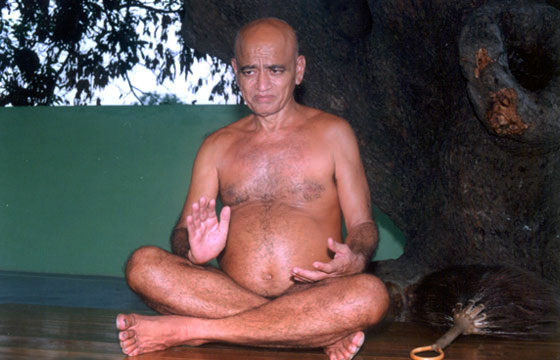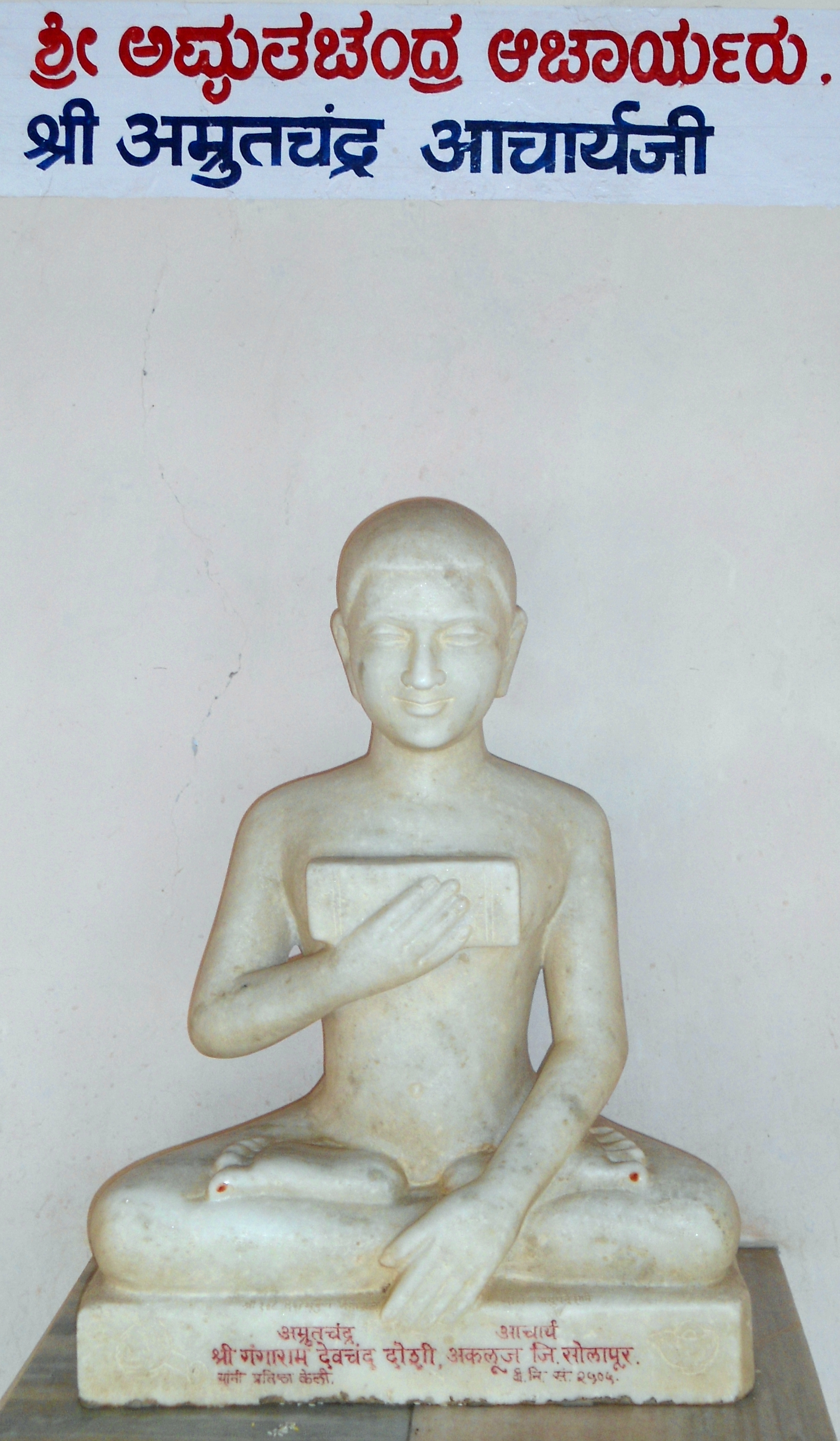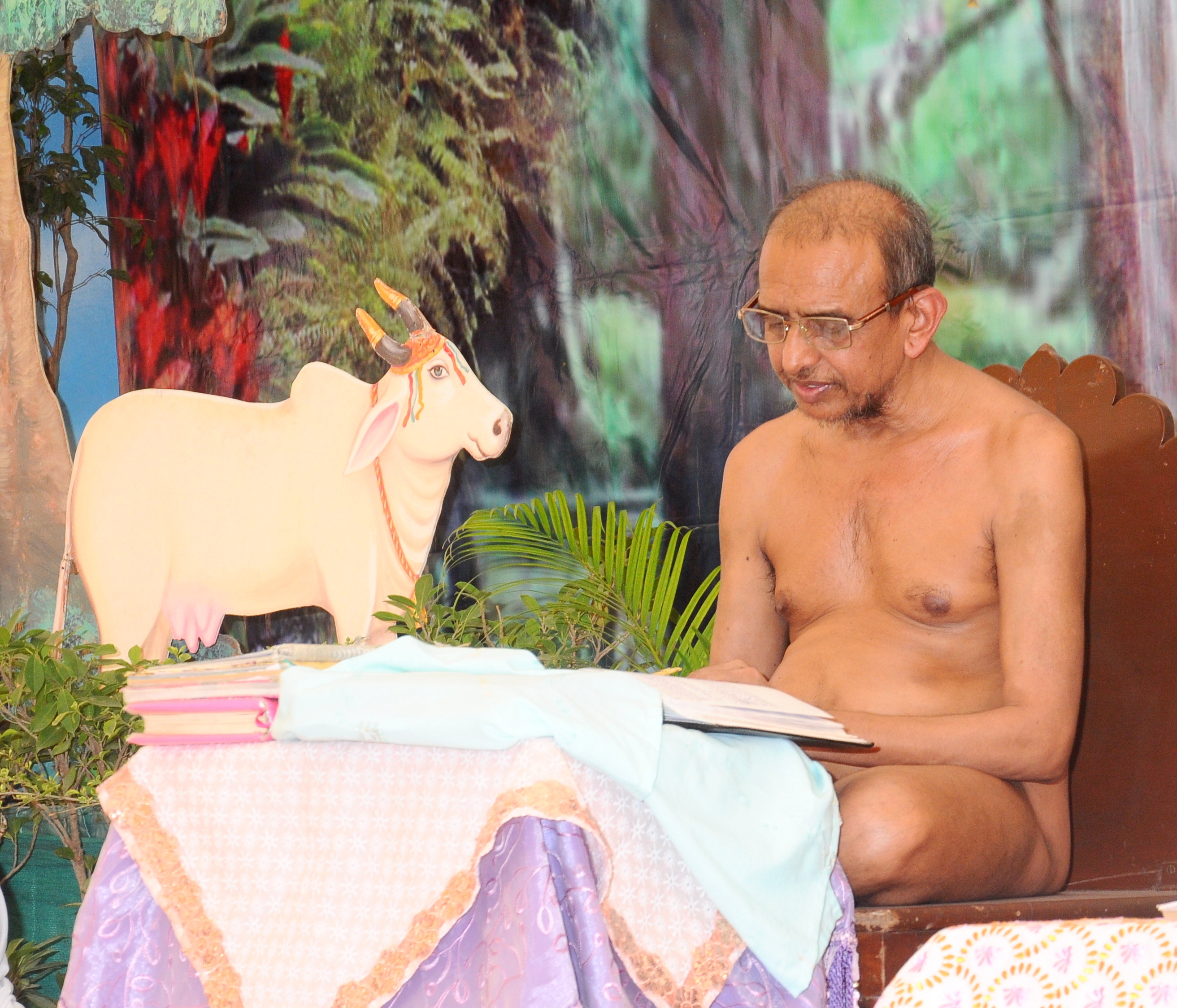List of Jain ascetics on:
[Wikipedia]
[Google]
[Amazon]

 This is a list of
This is a list of


 * Acharya Samantabhadra - Author of The
* Acharya Samantabhadra - Author of The

 This is a list of
This is a list of Jain ascetics
Jain monasticism refers to the order of monks and nuns in the Jain community and can be divided into two major denominations: the ''Digambara'' and the '' Śvētāmbara''. The monastic practices of the two major sects vary greatly, but the m ...
. The list include the names of ascetics who are known for their contributions to Jain philosophy
Jain philosophy refers to the ancient Indian philosophical system found in Jainism. One of the main features of Jain philosophy is its dualistic metaphysics, which holds that there are two distinct categories of existence, the living, consciou ...
and Jainism
Jainism ( ), also known as Jain Dharma, is an Indian religion. Jainism traces its spiritual ideas and history through the succession of twenty-four tirthankaras (supreme preachers of ''Dharma''), with the first in the current time cycle bein ...
in general.
* Indrabhuti Gautama
Gautam Swami was the ''Ganadhara'' (chief disciple) of Mahavira, the 24th and last Jain Tirthankara of present half cycle of time. He is also referred to as Indrabhuti Gautam, Guru Gautam, Gautam Swami Ganadhara and Gautam Swami.
Life
Gautama ...
* Bhadrabahu
Ācārya Bhadrabāhu (c. 367 - c. 298 BC) was, according to the ''Digambara'' sect of Jainism, the last '' Shruta Kevalin'' (all knowing by hearsay, that is indirectly) in Jainism . He was the last ''acharya'' of the undivided Jain ''sangha''. ...
, c. 4th century BCE. Last acharya of undivided Jain sangha.
* Kundakunda
Kundakunda was a Digambara Jain monk and philosopher, who likely lived in the 2nd CE century CE or later.
His date of birth is māgha māsa, śukla pakṣa, pañcamī tithi, on the day of Vasant Panchami.
He authored many Jain texts such ...
- 1st century BCE
* Sudharma Swami
Sudharmaswami ( sa, Sudharmāsvāmī or Sudharman; 607 BC – 507 BC) was the fifth ganadhara of Mahavira. All the current Jain acharyas and monks follow his rule.
Life
Sudharmaswami was the spiritual successor of Indrabhuti Gautama in religi ...
* Umaswami
Umaswati, also spelled as Umasvati and known as Umaswami, was an Indian scholar, possibly between 2nd-century and 5th-century CE, known for his foundational writings on Jainism. He authored the Jain text ''Tattvartha Sutra'' (literally '"All Tha ...
- Author of the Jain text, ''Tattvarthsutra
''Tattvārthasūtra'', meaning "On the Nature '' ''artha">nowiki/>''artha''.html" ;"title="artha.html" ;"title="nowiki/>''artha">nowiki/>''artha''">artha.html" ;"title="nowiki/>''artha">nowiki/>''artha''of Reality 'tattva'' (also known as ...
''
* Mantunga composer of Bhaktamara Stotra
Bhaktamara Stotra is a famous Jain Sanskrit prayer. It was composed by Acharya Manatunga (7th century CE). The name Bhaktamara comes from a combination of two Sanskrit names, "Bhakta" (Devotee) and "Amar" (Immortal).
The prayer praises '' ...
recognized by both, Digambar
''Digambara'' (; "sky-clad") is one of the two major schools of Jainism, the other being '' Śvētāmbara'' (white-clad). The Sanskrit word ''Digambara'' means "sky-clad", referring to their traditional monastic practice of neither possessing ...
and Śvētāmbara.
*''Akalank ji''
Digambara ascetics


 * Acharya Samantabhadra - Author of The
* Acharya Samantabhadra - Author of The Ratnakaranda śrāvakācāra
Ratnakaranda śrāvakācāra is a Jain text composed by Aacharya Samantbhadra Swamy (second century CE), an ''acharya'' of the Digambara sect of Jainism. Aacharya Samantbhadra Swamy was originally from Kanchipuram, Tamil Nadu. Ratnakaranda śr� ...
, Āpta-mīmāṁsā, Svayambhustotra
* Akalanka
Akalanka (also known as ''Akalank Deva'' and ''Bhatta Akalanka'') was a Jain logician whose Sanskrit-language works are seen as landmarks in Indian logic. He lived from 720 to 780 A.D. and belonged to the Digambara sect of Jainism. His work ''As ...
, c. 8th century CE. Digambara
''Digambara'' (; "sky-clad") is one of the two major schools of Jainism, the other being '' Śvētāmbara'' (white-clad). The Sanskrit word ''Digambara'' means "sky-clad", referring to their traditional monastic practice of neither possessing ...
acharya known for his works on Jain logic.
* Nemichandra Siddhant Chakravarti- Author of Gommatsāra
* Yativṛṣabha
Yativṛṣabha (Yativrishabha), also known as Jadivasaha, was a mathematician and Jain monk. He is believed to have lived during the 6th century, probably during 500–570. He studied under Arya Manksu and Nagahastin. He lived and worked betwe ...
- Author of Tiloya Panatti
''Tiloya Panatti'' or ''Trilokaprajnapati'' is one of the earlier Prakrit texts on Jain cosmology composed by Acharya Yativrshabha.
The subject matter
Jain cosmology has a unique perception of the Universe. It perceives different solar and lu ...
* Prabhācandra
Prabhācandra (c. 11th century CE) was a Digambara monk,grammarian,biographer, philosopher and author of several philosophical books on Jainism.
Life
Prabhachandra was a ''Digambara monk'' who flourished in 11th century CE. He denied the possib ...
* Virasena
Acharya Virasena (792-853 CE), also known as Veerasena, was a Digambara monk and belonged to the lineage of Acharya Kundakunda. He was an Indian mathematician and Jain philosopher and scholar. He was also known as a famous orator and an accompl ...
, Digambara, 790–825 CE
* Pujyapada
Acharya Pujyapada or Pūjyapāda (464–524 CE) was a renowned grammarian and ''acharya'' (philosopher monk) belonging to the Digambara tradition of Jains. It was believed that he was worshiped by demigods on the account of his vast scholarship ...
* Aparajita
* Aryanandi, 20th century Digambara acharya
* Vidyasagar
Vidyasagar or Vidya Sagar may refer to:
People
*Acharya Vidyasagar (born 1946), prominent Digambar Jain Acharya (1946-)
* Ishwar Chandra Vidyasagar (1820–1891), Bengali scholar
*Vidyasagar (composer) (born 1963), South Indian music director
* ...
, Digambara, Born 1946
* Ganeshprasad Varni, 1874–1961 CE. Digambara. Founder of many Jain Institutions.
* Ilango Adigal
Ilango Adigal ()() was a Jain monk and a poet, sometimes identified as a Chera prince. He is traditionally credited as the author of '' Cilappatikaram'', one of the Five Great Epics of Ancient Tamil literature. He is one of the greatest poets ...
* Jambu Swami
* Jambuvijaya
* Jinaratna
Jinaratna (Jina·ratna; Hindi: जिनरत्न) was a Jain scholar monk who composed ''Līlāvatīsāra.'' He completed his poem in the year 1285 CE in Jabaliputra, western India, (modern Jalore in Rajasthan). It is an epitome of a much ...
* Jinasena
Jinasena (c. 9th century CE) was a monk and scholar in the ''Digambara'' tradition of Jainism. He was patronized by the Rashtrakuta king Amoghavarsha I. He was the author of ''Adipurana'' and '' Mahapurana''.Rashtrakuta rulers, 800–880 CE.
* Jinendra Varni
* Gyansagar
* Kumudendu
* Manatunga composer of
Bhaktamara Stotra
Bhaktamara Stotra is a famous Jain Sanskrit prayer. It was composed by Acharya Manatunga (7th century CE). The name Bhaktamara comes from a combination of two Sanskrit names, "Bhakta" (Devotee) and "Amar" (Immortal).
The prayer praises '' ...
* Shantisagar
Acharya Shri Shantisagar (1872–1955) was an Indian monk of the Digambara school of the Jain faith. He was the first Acharya (preceptor) and a leader of his sect in the 20th century. Shanti Sagar ji revived the teaching and practice of traditi ...
, Digambara, 1872–1955
* Siddhasena Divakara
Siddhasēna Divākara ( pka, सिद्धसेन दिवाकर) was a ''jain monk'' in the fifth century CE who wrote works on Jain philosophy and epistemology. He was like the illuminator of the Jain order and therefore came to be kno ...
, 5th century CE
* Acharya Deshbhushan- Jain Acharya of the 20th century
* Acharya Vidyananda - Acharya of the 20th Century
* Tarunsagarji
*Acharya Viraag sagar
* Acharya Vishudh Sagar
* Adikavi Pampa - poet, one of the "three gems of Kannada literature
Kannada literature is the corpus of written forms of the Kannada language, a member of the Dravidian family spoken mainly in the Indian state of Karnataka and written in the Kannada script.
Attestations in literature span one and a half ...
".
* Gyanmati
Śvētāmbara ascetics
*Somadeva Suri
Somadeva Suri was a south Indian Jain monk of the 10th century CE (fl. 959–66, possibly born in Bengal region about 920), author of a work known as "Upasakadyayana" "chapter on lay followers (''upasakas'')", a central work of Digambara ''shrava ...
*
* Vallabhsuri
* Mahopadhya Yasovijayaji
*
* Ram Chandra Suri, Śvētāmbara, Samvat 1952–2047
*
* Anand Rishiji Maharaj
* Andayya
Andayya (or Andaiah, Āṇḍayya, Kannada: ಆಂಡಯ್ಯ) was a notable 13th-century Kannada writer during the rule of the Hoysala empire. Andayya was a Jain by faith and came from a family of accountants. His most important extant wor ...
- Kannada poet
* Haribhadra
Aacharya Haribhadra Suri was a Svetambara mendicant Jain leader, philosopher , doxographer, and author. There are multiple contradictory dates assigned to his birth. According to tradition, he lived c. 459–529 CE. However, in 1919, a Jain m ...
Great Thinkers of the Eastern World (1995), I.P.McGreal (ed.), Harper Collins, New York. - 12th century philosopher
* Sthulabhadra
Sthulabhadra (297-198 BCE) was the founder of Svetambara Jain order during a 12-year famine in Maurya empire in third or fourth-century BC. He was a disciple of Bhadrabahu and Sambhutavijaya. His father was Sakatala, a minister in Nanda kingd ...
* Bhikshu
A ''bhikkhu'' (Pali: भिक्खु, Sanskrit: भिक्षु, ''bhikṣu'') is an ordained male in Buddhist monasticism. Male and female monastics ("nun", ''bhikkhunī'', Sanskrit ''bhikṣuṇī'') are members of the Sangha (Buddhist c ...
, 1726–1803 CE. Creator of Terapanthi sect of Jainism.
* Vijayanandsuri - Guru of Acharya Vallabsuriji
* Haribhadra
Aacharya Haribhadra Suri was a Svetambara mendicant Jain leader, philosopher , doxographer, and author. There are multiple contradictory dates assigned to his birth. According to tradition, he lived c. 459–529 CE. However, in 1919, a Jain m ...
, c. 7th century CE. Śvētāmbara.
* Hemachandra
Hemachandra was a 12th century () Indian Jain saint, scholar, poet, mathematician, philosopher, yogi, grammarian, law theorist, historian, lexicographer, rhetorician, logician, and prosodist. Noted as a prodigy by his contemporaries, he gain ...
, 1089–1172 CE. Śvētāmbara.
* Hiravijaya
Hiravijaya (1526–1595), also known as Muni Hiravijayji and Hiravijay Suri, was a Acharya, high priest of the Tapa Gaccha monastic order, following the Jain Svetambara tradition. He is known for propounding the Jain philosophy to Mughal Empire ...
, Śvētāmbara; he influenced
* Acharya Mahaprajna - Acharya of Terapanth sect
* Tulsi (Jain monk)
* Acharya Rajendrasuri - Acharya of the 20th century
* Acharya Mahasharman
Acharya Mahashraman (IAST: Ācārya Mahāśramaṇa; born 13 May 1962) is the eleventh Acharya, supreme head of Jain Śvētāmbara Terapanth sect. Mahashraman ji heads all activities functioning under Terapanth organisation, most notably Anuv ...
- 11th Acharya of Jain Swetamber Terapanth Community.
* Acharya Vijay Vallabh suri
*Acharya Vimalsagar - Acharya of the 20th century
* Acharya Sushil Kumarji Maharaj
*
Other
*Rajchandra
Shrimad Rajchandra (11 November 1867 – 9 April 1901) was a Jain poet, mystic, philosopher, scholar and reformer. Born in Vavaniya, a village near Morbi, he claimed to have recollection of his past lives at the age of seven. He performed ''A ...
* Kanji Swami
Kanji Swami (1890–1980) was a teacher of Jainism. He was deeply influenced by the ''Samayasāra'' of Kundakunda in 1932. He lectured on these teachings for 45 years to comprehensively elaborate on the philosophy described by Kundakunda and ot ...
, founder of Kanji Panth
are the logographic Chinese characters taken from the Chinese script and used in the writing of Japanese. They were made a major part of the Japanese writing system during the time of Old Japanese and are still used, along with the subsequen ...
sect of Digambara
''Digambara'' (; "sky-clad") is one of the two major schools of Jainism, the other being '' Śvētāmbara'' (white-clad). The Sanskrit word ''Digambara'' means "sky-clad", referring to their traditional monastic practice of neither possessing ...
Notes
References
* {{Jainism topics *Monks
A monk (, from el, μοναχός, ''monachos'', "single, solitary" via Latin ) is a person who practices religious asceticism by monastic living, either alone or with any number of other monks. A monk may be a person who decides to dedic ...